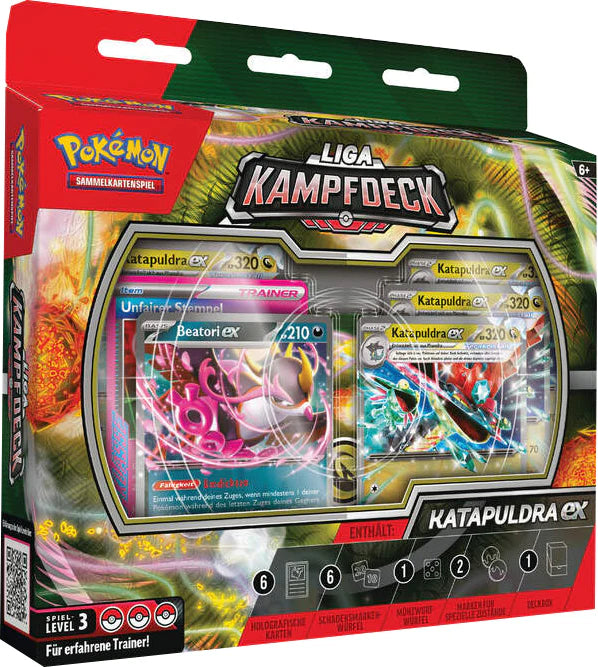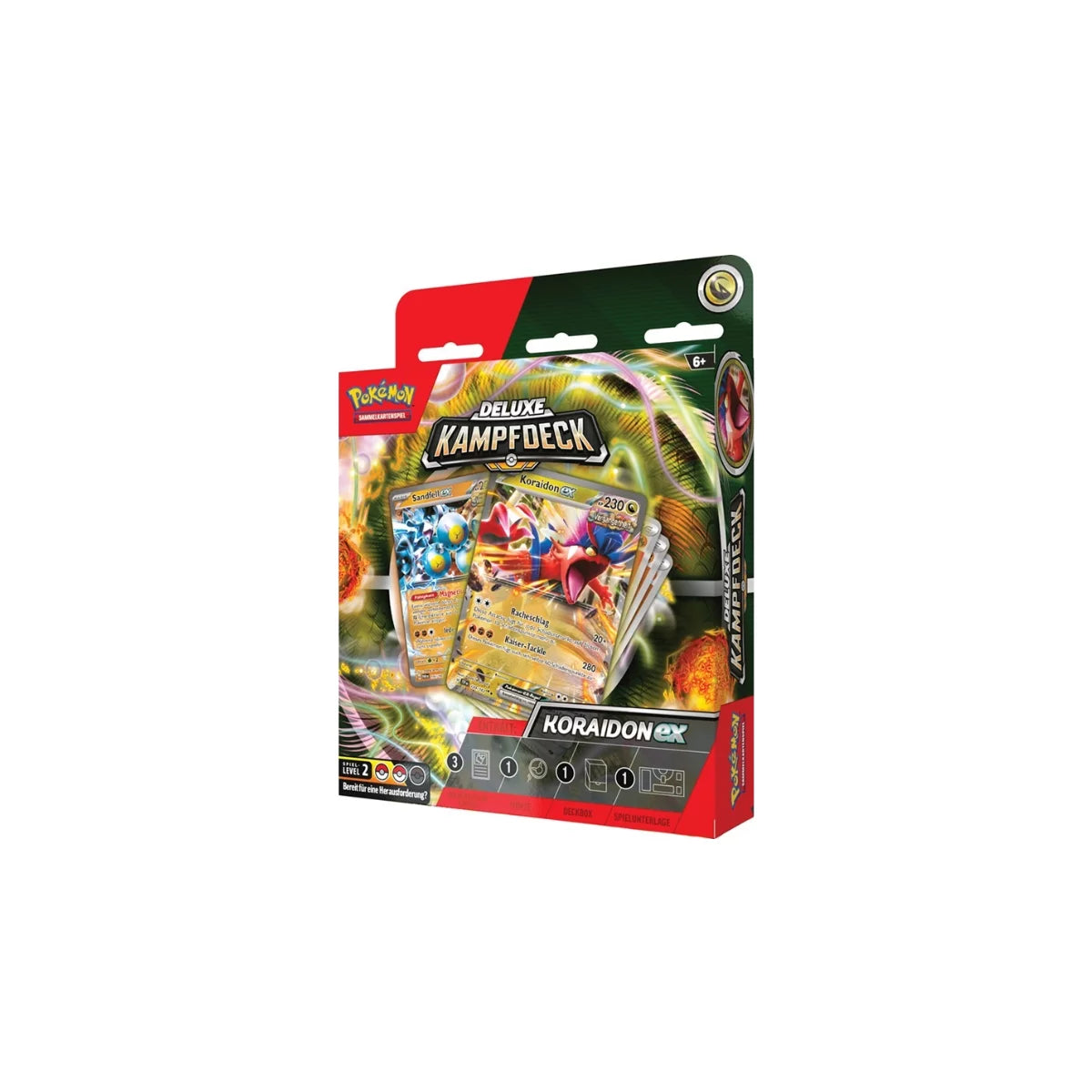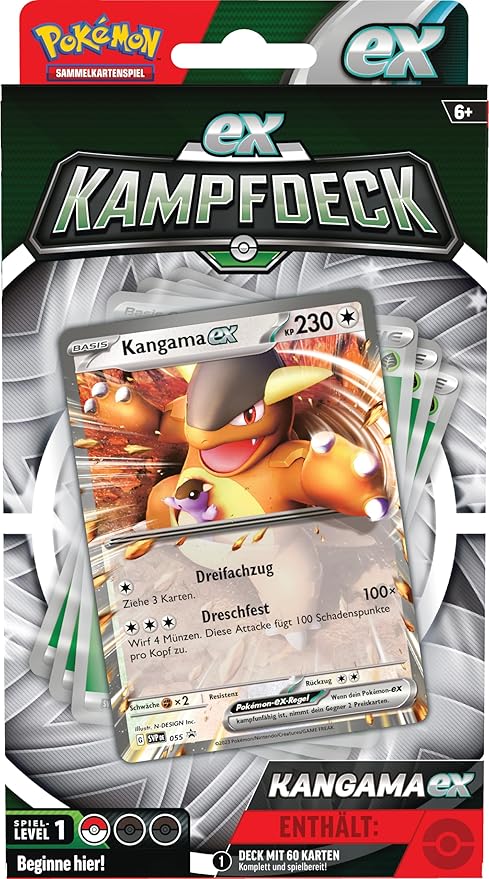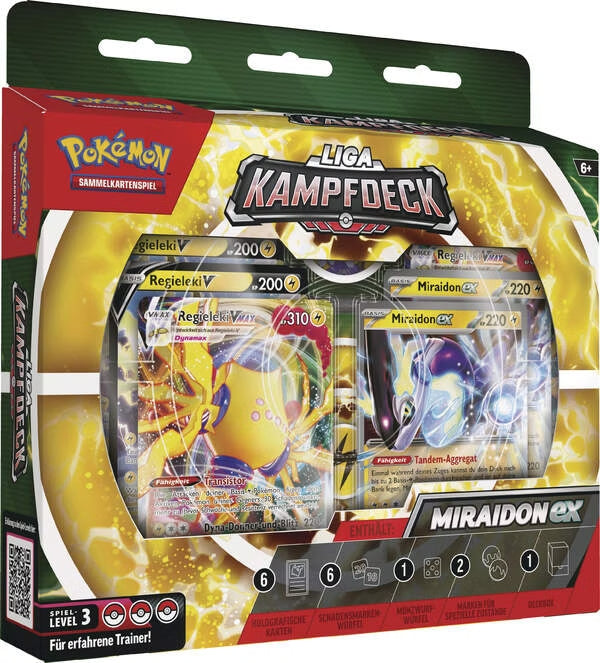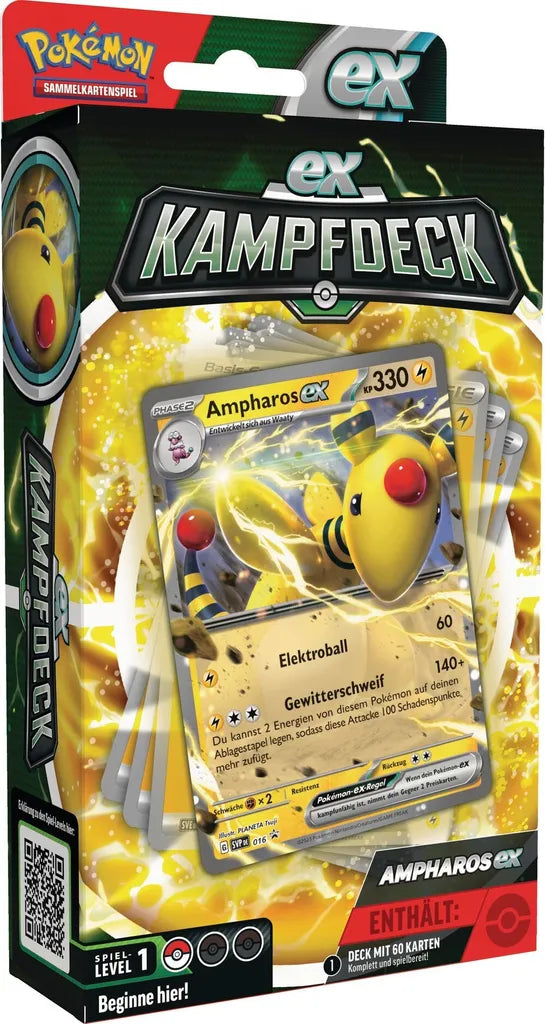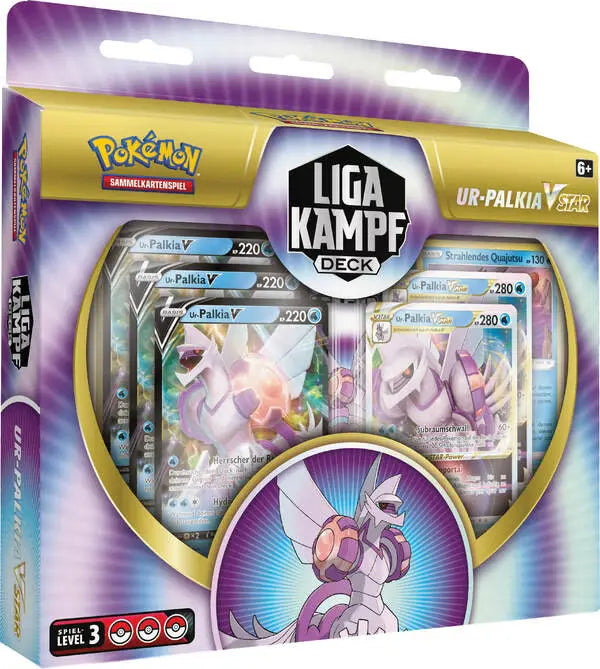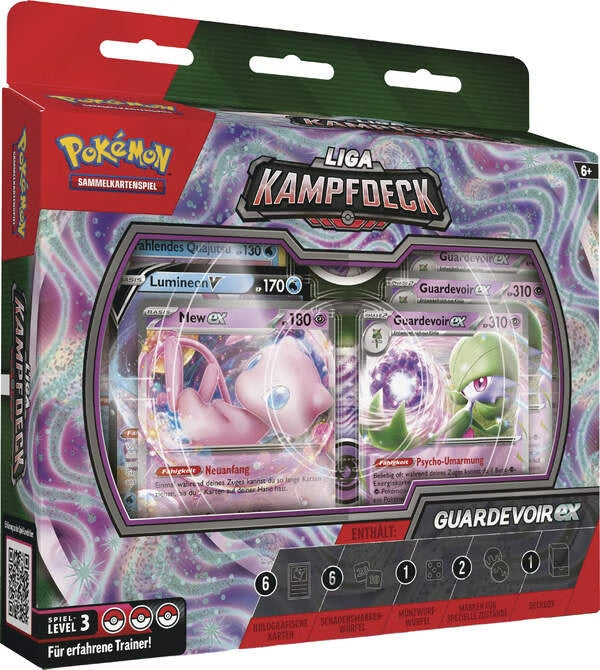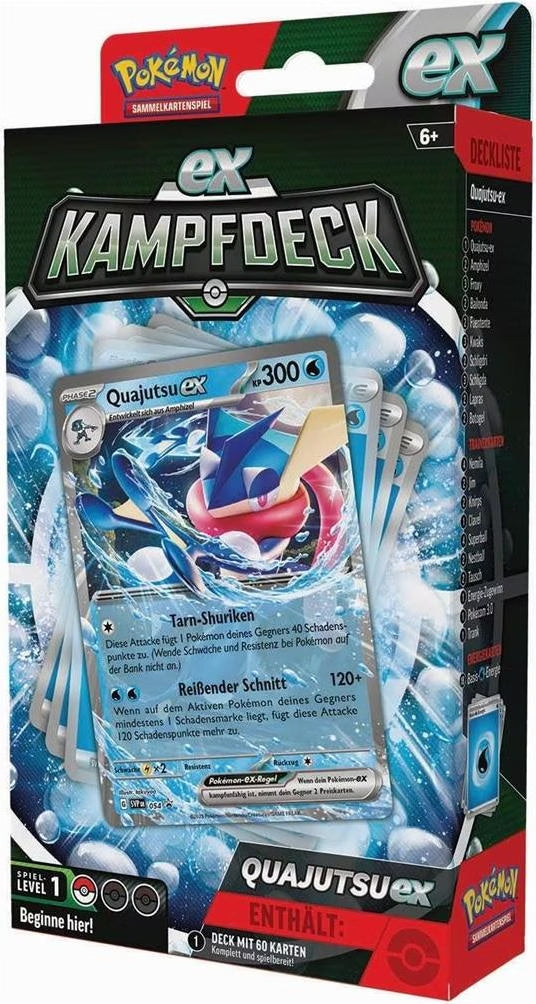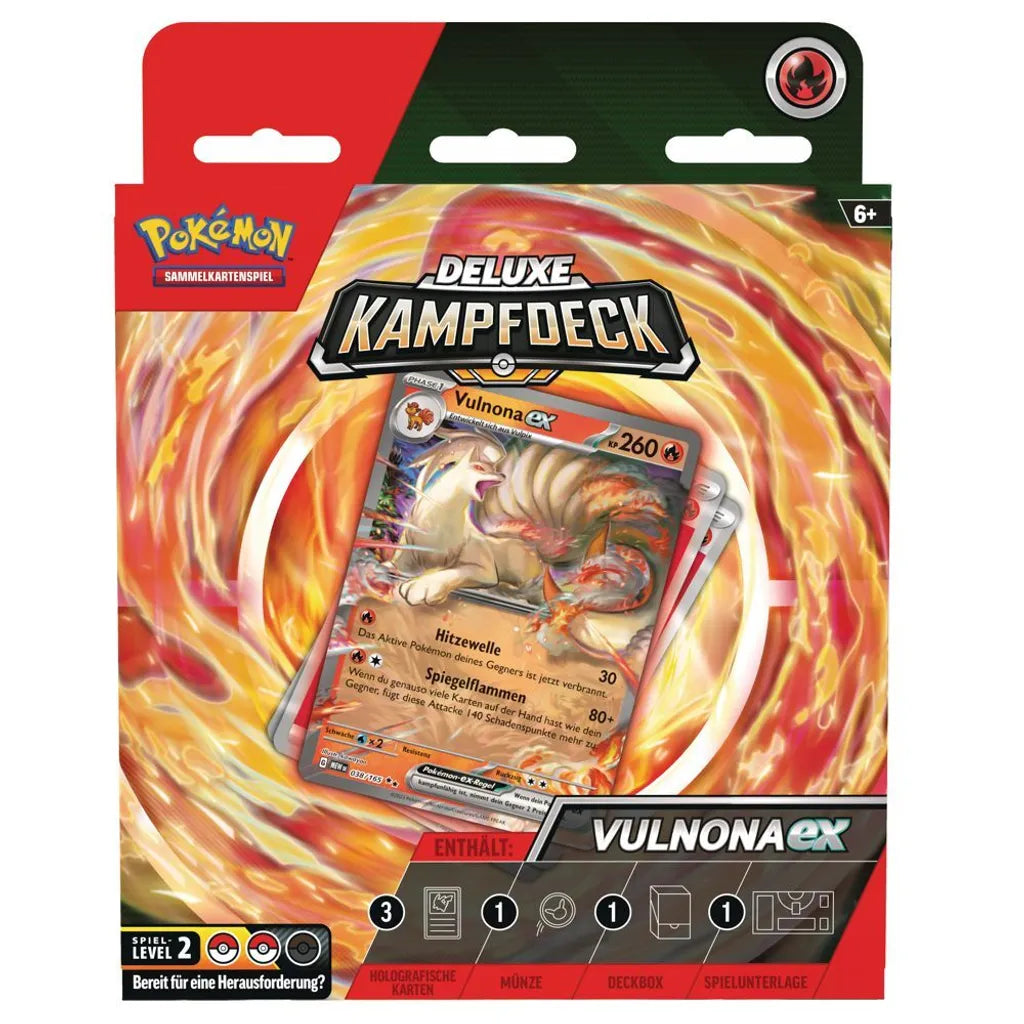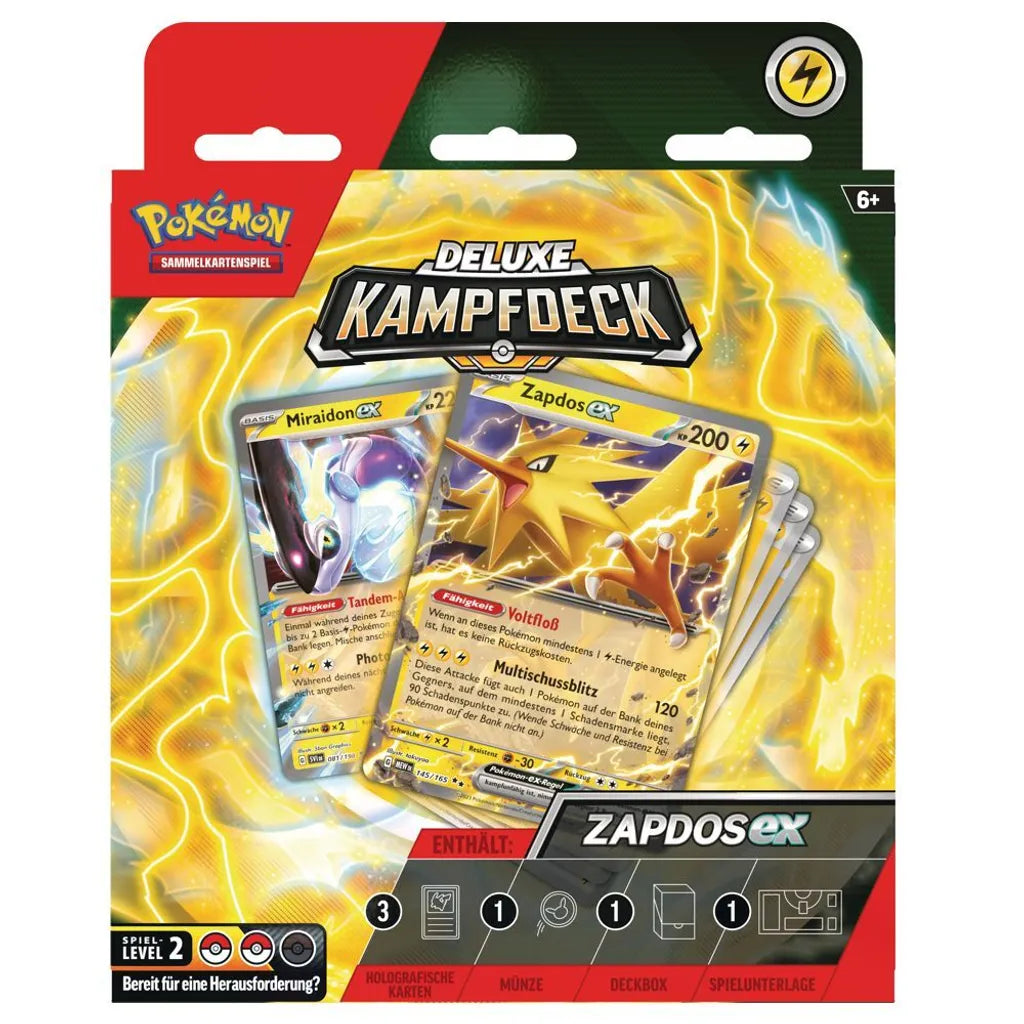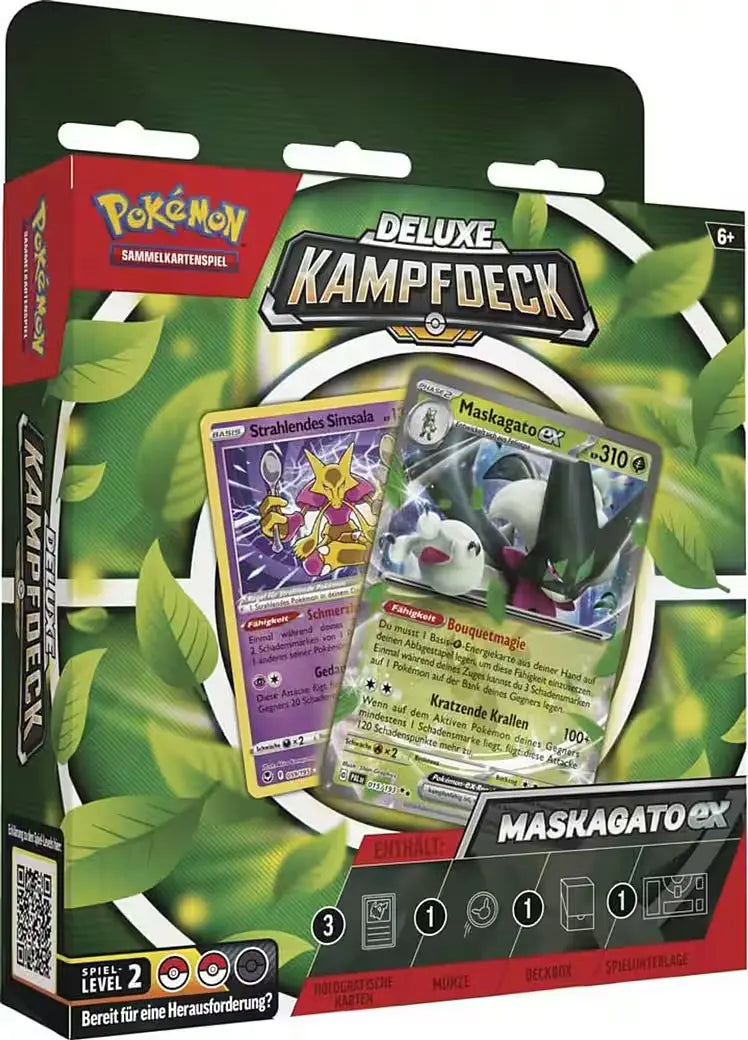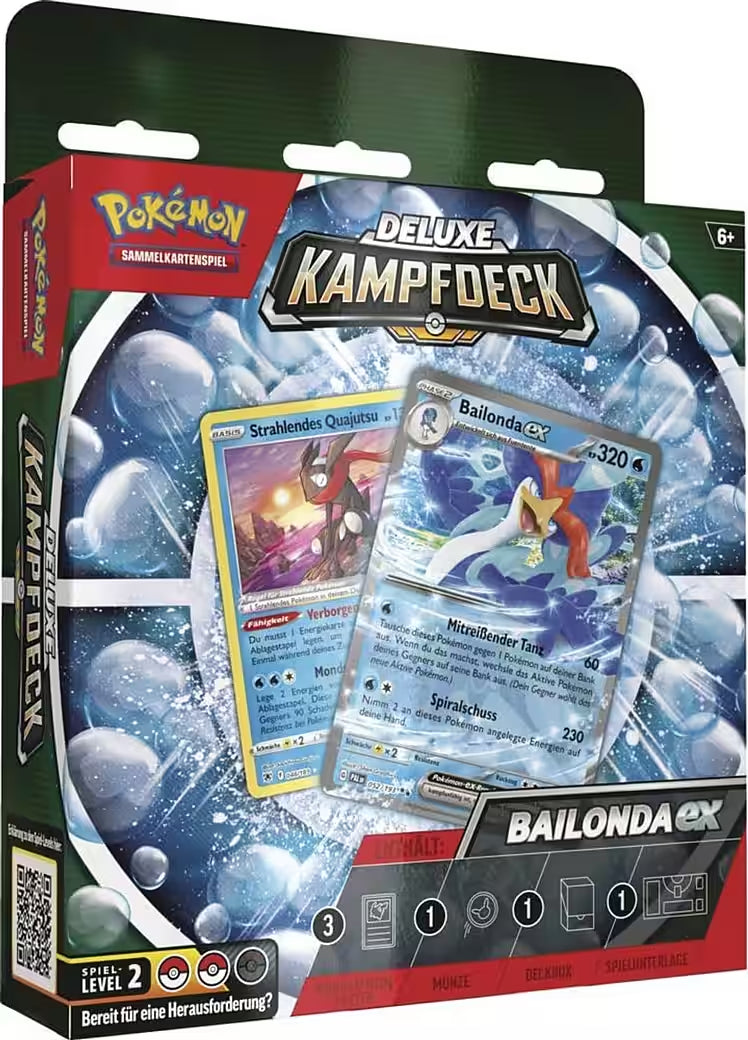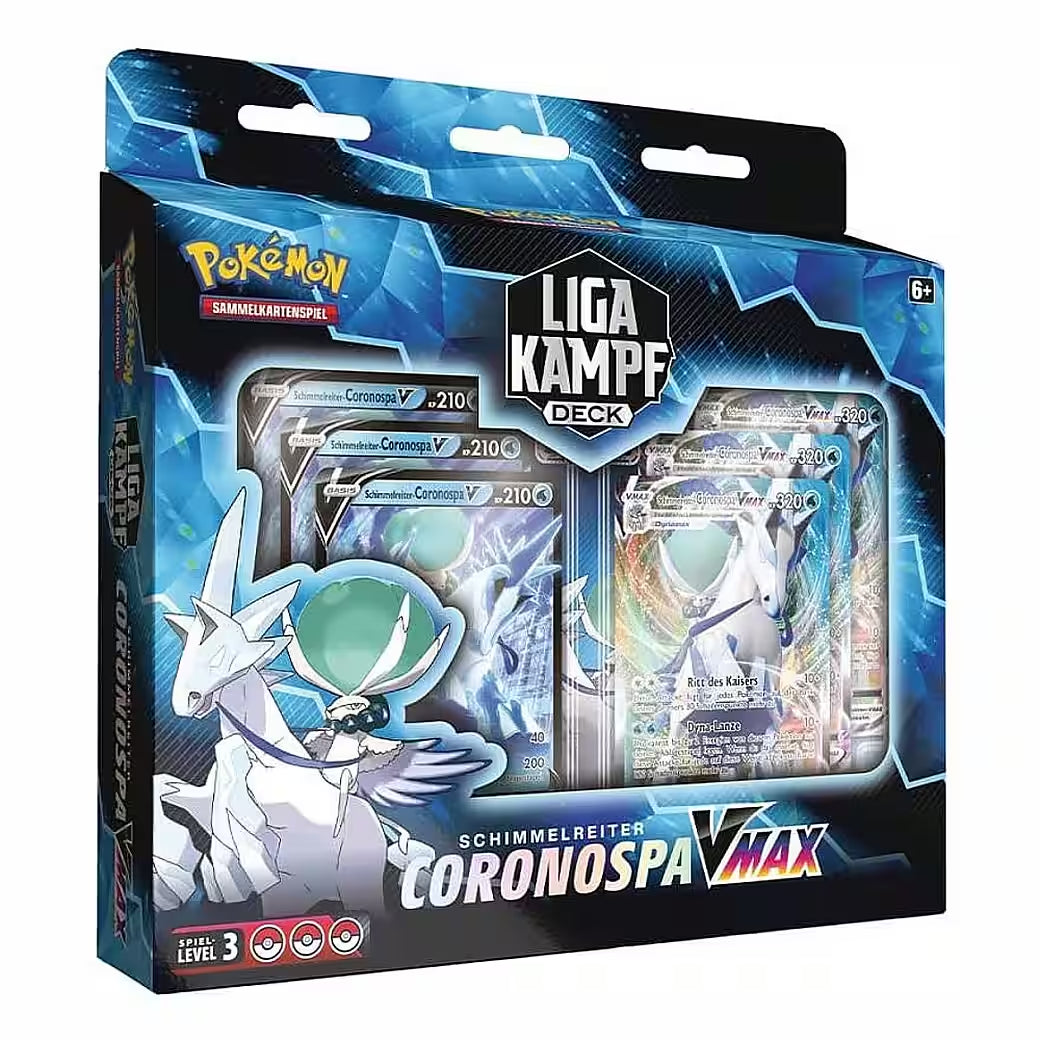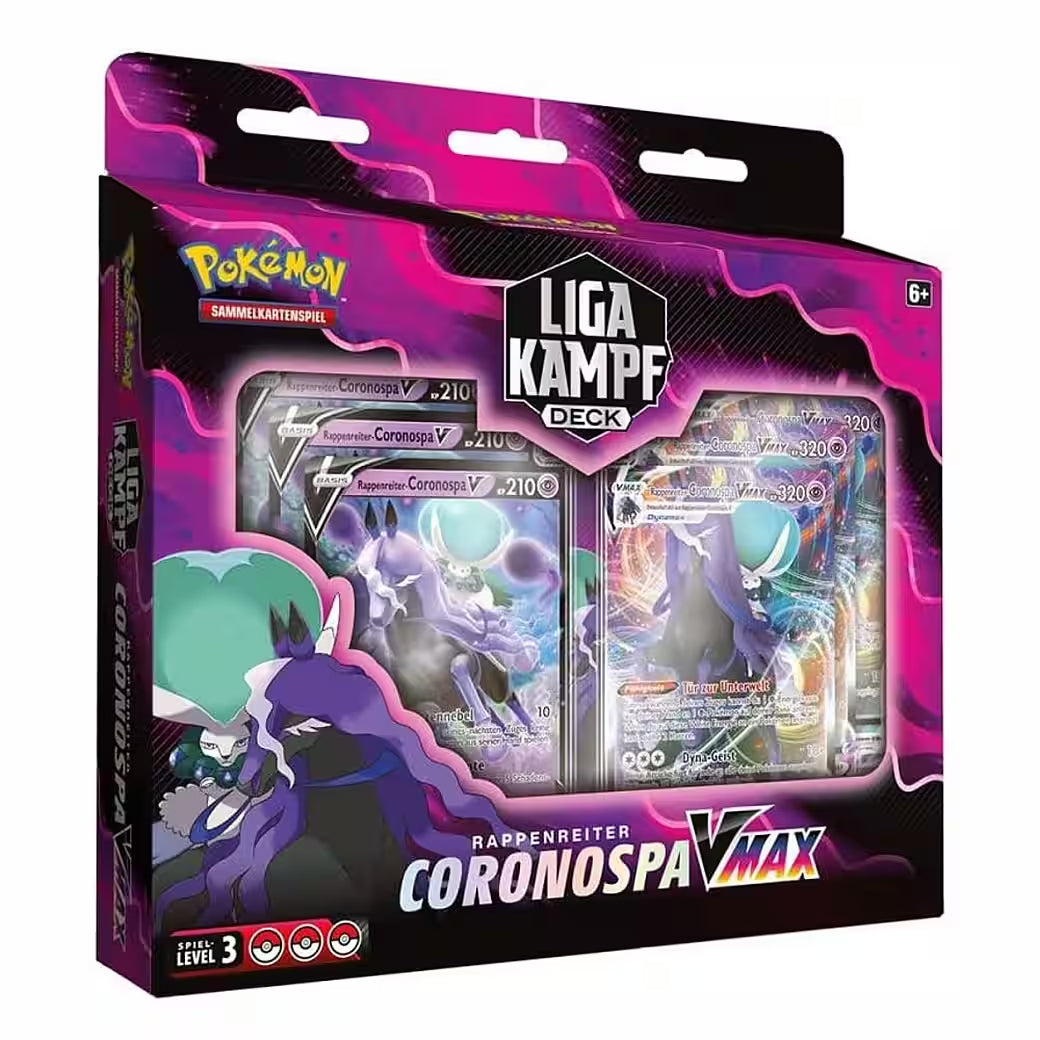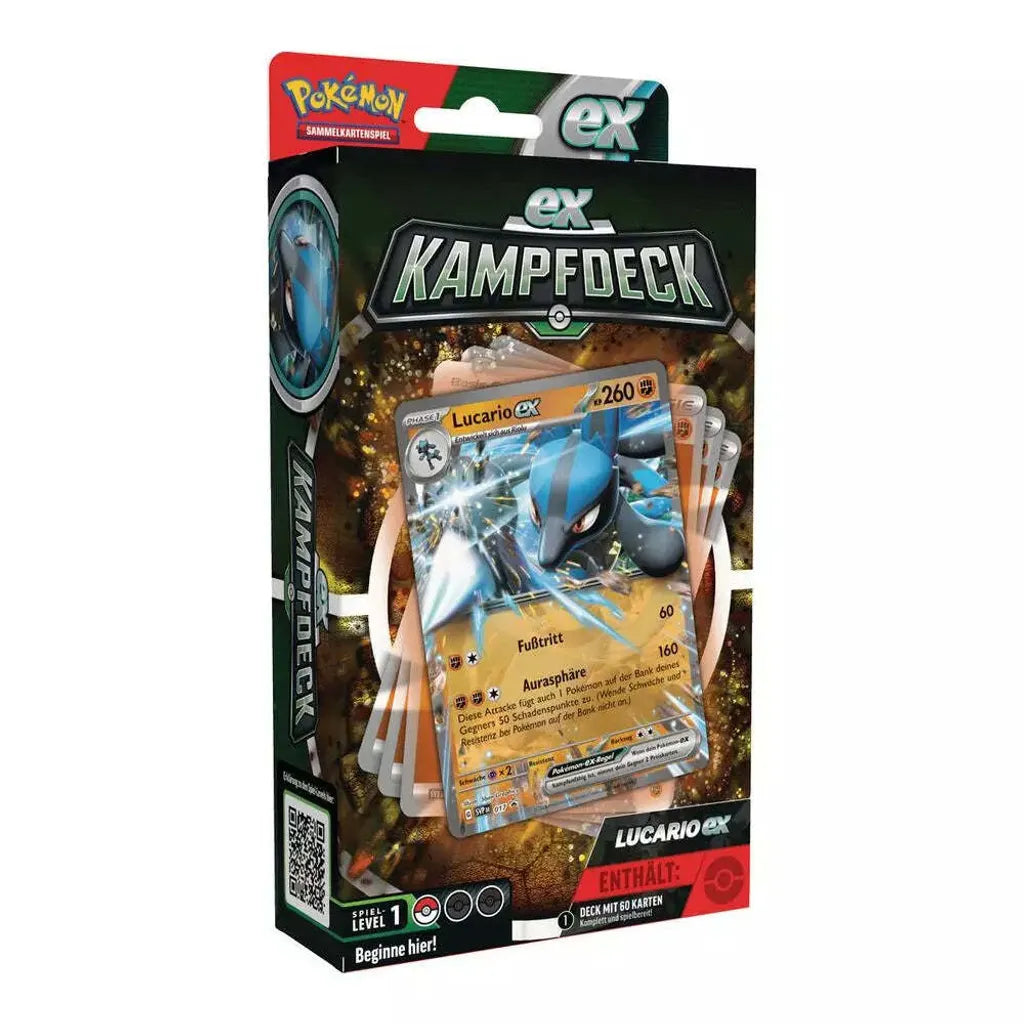Pokémon Battle Deck
Interesting facts about Pokémon Battle Deck
Pokémon Battle Decks – ready to play, fair entry, fast upgrade path
You don't want to spend months gathering cards, but want to play today ? Then Pokémon Battle Decks are exactly what you need: pre-made 60-card decks , tournament-compliant and playable in your language right out of the box, with a clear game plan and a solid foundation of Trainer, Pokémon, and Energy cards. Here you'll get honest, practical advice: What types of Battle Decks are there? What's in them? What are the regional differences? Which ones are worth it for whom—and how do you equip them wisely?
What exactly is a battle deck?
A Battle Deck is a pre-constructed, complete 60-card deck centered around one or two key cards (e.g., a Pokémon ex ). It's not a grab-bag like boosters, but rather a curated list with a clear strategy: Basic, Stage 1/2 Pokémon, matching Trainer cards, and Energy—pre-shuffled. This is usually accompanied by:
-
Short rules/strategy guide (how do I play the deck, which sequences are important?)
-
Game mat (paper) & damage markers
-
Large metal coin (for coin tosses; for higher value versions often dice and acrylic markers )
-
Deck box (simple but practical)
-
Code card for Pokémon TCG Live
Details vary depending on the product line (see below), but the basic benefit remains the same: unpack → mix → get started .
The important combat deck types at a glance
1) ex Battle Decks (Skarlet & Violet era; formerly V Battle Decks )
Target group: beginners and returnees.
Character: A solid, easy-to-pilot 60-card deck centered around a central Pokémon ex (formerly V).
Typical contents: 60-card deck (language specific), large coin , quick start guide/rulebook , single game mat , markers/damage counters , deck box , code card for online play (in international versions).
Strengths: Start playing immediately, understandable game plan framework, good value for money for learning.
Limitations: Often too basic for tournaments – you win friend rounds, but for leagues/cups you need upgrades.
2) Deluxe Battle Decks
Target group: Ambitious beginners who want “a little bit more.”
Character: Like ex Battle Deck, but more valuable (more foils/key cards, sometimes stronger core).
Strengths: Better out-of-the-box feel, mostly more well-rounded trainer suite than the standard ex-decks.
Limits: Not quite “league ready” yet, but the jump is smaller .
3) League Battle Decks
Target group: Players who want to get started with the meta right away.
Character: Curated, competitive lists with multiple copies of important trainer/engine cards and often stronger Pokémon lines (ex/VSTAR/Vmax, depending on the era).
Typical contents: 60-card deck, dice (damage counter) , tournament dice for coin flips , condition markers , deck box , code card .
Strengths: Realistic league/tournament capable “out of the box”, ideal as a basis for fine-tuning.
Limits: A bit more expensive – but saves time and the risk of making mistakes compared to “searching for everything individually.”
4) VS Double Packs / Duel Decks
Target group: Two people want to play against each other immediately.
Character: Two 60-card decks in one bundle, including shared learning materials.
Strengths: Perfect for couples/friends/siblings, quick learning curve.
Limits: Each single deck is usually a bit simpler than the solo variants.
5) World Championship Decks (special case)
Target group: Learning/meta-interested people.
Character: Reprints of real World Cup lists (own design, special back).
Important: Not tournament legal. Ideal for studying strong strategies and playing test games at home.
Regional / linguistic differences – what you should pay attention to
International (DE/EN/FR …):
The names are consistent: ex Battle Deck (entry level) and League Battle Deck (advanced level). The content guidelines are similar: 60 cards + accessories; League variants often use dice/markers instead of paper coins.
Japan/Korea:
There, comparable products are known as Starter/Start Deck , Starter Set ex , or Battle Deck . The philosophy is similar (finished 60-card deck + playmat/marker/guide). Differences lie in the accessories (often paper markers instead of acrylic, different coins) and the card pool (Japanese printing line, early availability of some cards). For local tournament play in the DACH region, German/English decks are recommended – language/rules comfort and accessibility at events are simply better.
What you will find in battle decks
-
A complete 60-card deck in the respective language
-
Accessories for immediate start: depending on the type, damage counter (dice or marker), large coin, condition marker, single game mat, quick start guide/rule booklet, deck box.
-
Code card (international) for Pokémon TCG Live so you can play the list digitally.
-
League Battle Decks : noticeably higher density of staples (e.g. search/draw/item engines) and stronger core lines.
(Details vary depending on the wave/release—so always check the back. But you'll reliably encounter the building blocks mentioned above in practice.)
Which battle deck is worth it for whom?
Beginners & Parents
-
Goal: Learn the rules, have fun, without searching for cards.
-
Recommendation: ex-Battle Deck. You get everything you need in one box – fair price, clear learning curve.
-
Extra tip: If it's fun, take a second ex-deck with a different playstyle (e.g., "fast & aggressive" vs. "controlled & tanky") and alternate between them. This way, you'll learn matchups quickly.
Returnees & Casuals
-
Goal: Get back into it, play store leagues occasionally.
-
Recommendation: League Battle Deck. You save yourself the hunt for staples, have a viable shell , and can get up to meta speed with just a few cards.
-
Extra tip: Check the rotation (older sets are eliminated). League decks from newer waves are usually more rotation-safe .
Ambitious players
-
Goal: quick starting point, then optimize.
-
Recommendation: League Battle Deck as a budget base , plus targeted individual cards. This way, you can quickly reach 60 tournament-ready decks without building from scratch.
collector
-
Goal: Structure & clarity.
-
Recommendation: ex- or League decks of your favorite Pokémon/mechanics. Sealed on the shelf, they look great; opened, they're playable —not just a dead dust collector.
Useful additions
-
Accessories – sleeves , deck box , playmat of better quality than the inserts; protects cards and saves stress.
-
Pokémon Boosters – for drawing specific Trainers/Uncommons and for trading in the League.
-
Pokémon Displays – if you need a specific number of staples from a set; often cheaper than individual boosters.
Buy recommendation in 30 seconds
-
New or back? → ex Battle Deck (easy to learn, affordable).
-
Want to start stronger? → Deluxe Battle Deck .
-
League/tournament now? → League Battle Deck .
-
Studying in pairs? → VS-Doublepack .
Don't expect a miracle : A combat deck is the foundation. The miracle is you – with some gameplay experience and 5-10 useful upgrades.
If you keep this in mind, Pokémon Battle Decks deliver exactly what they're supposed to: instant playability , reliable learning progression , and a clear upgrade path —without getting lost in the booster jungle. And when you do get the urge to chase hits, you know where to find them— boosters for the kick , display decks for the sample.
Frequently Asked Questions
Pokémon Trading Cards are part of the popular Pokémon Trading Card Game (TCG) . Players and collectors can collect, trade, and use cards featuring various Pokémon, Trainer cards, and Energy cards in strategic battles.
There are different categories of Pokémon cards:
- Basic Pokémon Cards – Standard cards featuring Pokémon from all generations.
- Holo and Reverse Holo cards – Rare cards with a shiny effect.
- Pokémon EX, GX, V, VMAX & VSTAR cards – Stronger Pokémon with special abilities
- Trainer and Energy Cards – Supporting cards for the
- Game. Special Cards & First Edition Cards – Limited and rare editions for collectors.
In our shop you will find a large selection of Pokémon cards, including:
- Pokémon Booster Packs – Individual packs containing random cards.
- Pokémon Booster Boxes – Contains multiple booster packs.
- Pokémon Displays – Perfect for collectors looking for many cards at once.
- Pokémon Tin Boxes – Contains exclusive promo cards & booster packs.
A Pokémon booster pack usually contains 10 random cards, including one rare card.
A Pokémon display consists of several booster packs (usually 36) and offers a higher probability of rare cards.
Rare Pokémon cards are often hard to find and especially valuable. These include:
- Pokémon First Edition cards
- Pokémon Base Set Cards
- Pokémon 151 cards
- Holo and Secret Rare cards
- Japanese Pokémon cards, which often have special designs
To keep your cards in top condition, we recommend:
- Protective cases or top loaders for valuable cards
- Pokémon scrapbooks or boxes for storage
- Avoid direct sunlight & moisture

